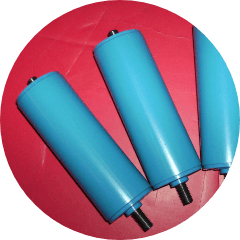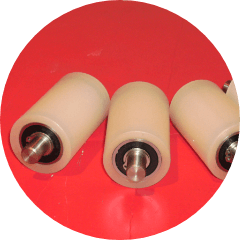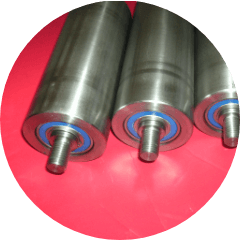Conveyor belt tracking is the process of aligning a conveyor belt and controlling it so it follows a set path. It’s often thought of as a difficult challenge for even expert maintenance technicians. However, with the right tools and guidance tracking a conveyor belt can be simple.
In this blog, we’re going to explore some advice on how to track your conveyor belt. Here is our 3-step process to get your conveyor belt running on the right track:
Three Quick & Simple Ways to Track a Conveyor Belt
1. As the conveyor belt is running, loosen the set of belts at the tail pulley end. This process loosens the snub roller, which is the main part that steers the conveyor belt.
2. Use a rubber mallet to secure the bolts into place in the direction you want your conveyor belt to move. For example, if you want to make your conveyor belt move towards the left, tap the bolts to the left-hand side. This will move the snub roller. After this adjustment, retighten the bolts so the snub roller remains in its new position. Once this has been done let the belt run and you should see the belt begin tracking towards the centre of the conveyor.
3. Finally, repeat the steps until the middle of the conveyor belt is within a quarter-inch of the centre of the tail pulley. Ensure you check the results of the small adjustments you’re making. Conveyor belts that are longer snub rollers will need additional adjustments. Remember to always begin with the snub rollers that are at the centre of the conveyor belt.
The Conveyor Belt Frame Needs to be Level and Square
Our team report that around 90% of the conveyor belts they’ve seen mistracking is because the belt is not level and/or square. What happens when a conveyor belt is not square or level is the belt will shift from side to side. How do you check this?
To monitor the accuracy of your conveyor’s level you need to use a standard level. After this, check that the frame and the pulleys are also on the correct level. Once you have corrected any issues your conveyor belt will run the right tracking if your conveyor belt is square as well.
Checking that your conveyor belt is square is also simple; when you know how to do so. Firstly, snap the dimensions of your conveyor belt from one corner to the opposite side. The measurements should be equal after this process. There is some room for error with the measurements as most manufacturers provide squaring rods on the bottom side of the conveyor. You can use the squaring rods to align the frame back into place.

The End Pulleys Need to be Square
Often, the first thing that a maintenance technician will do is track the conveyor belt by steering the pulley at the end of the belt. But, this can make the mistracking problem worse. This is because it’s too much of an adjustment.
A solution to this problem is to adjust the rollers under the conveyor belt. Most conveyors are built with small rollers beneath the belt and unit. They’re known as snub rollers or idlers. If you adjust these rollers, this will help to track the belt. Especially, when the end pulleys of your conveyor belt have been adjusted.
Check for Debris
Whatever industry you operate in, there is going to be debris and rubbish. This mess can affect the end pulleys of a conveyor belt. One way to ensure your conveyor belt is tracking correctly is to clear any debris. This will prevent any debris causing the pulley to become raised which will make the conveyor belt mistrack. As well as checking technical issues, it’s important to keep your conveyor belt clean.
Ensure Your Conveyor Belt is Cut Straight
Depending on where your purchase your conveyor belt from, it could be cut incorrectly. When the conveyor belt is not built properly it could have an arc to it, this will cause mistracking. The quickest and most simple way to check this is to lay the conveyor belt on the floor and look to see if it’s straight.
To find out more about our conveyor rollers & how we can help you please get in touch with our team today:
Contact Us Today
Give us a call on 01604 592960 or please feel free to fill in the enquiry form on our contact page today.



